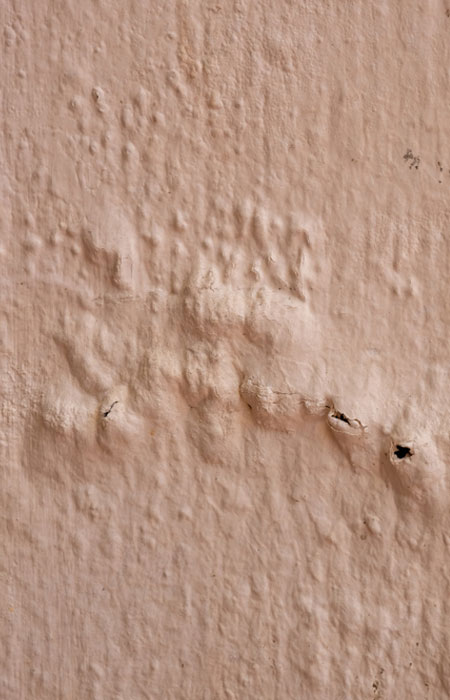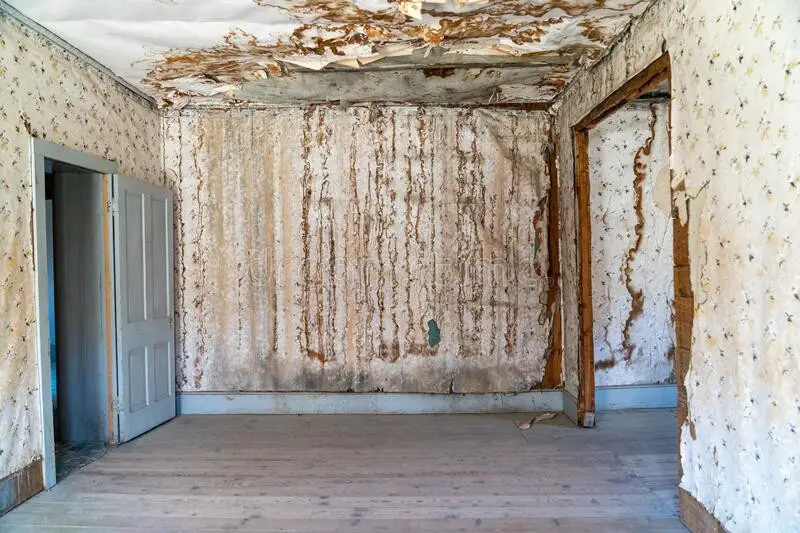What are your thoughts about How to Find and Repair Water Leaking in the Wall?

Water discolorations on walls are not pleasurable to the eyes. Your residence needs to lack discolorations on the wall surfaces, roofing system, or floors. That is the ideal state of a house and its frameworks. Often it seems practically inevitable to experience water stains on walls in houses.
Homeowners living in humid areas constantly deal with the fear of water spots on walls. With accurate as well as all-round info on the causes of water discolorations and also punctual repair work procedures, you will certainly always be an action in advance of such incidents.
3 Common Sources Of Water Discolorations on Wall Surfaces
In contrast to common belief, water stains on walls do not constantly come from poor structure products. There are numerous sources of water discolorations on wall surfaces. These include:
Poor Drainage
This will certainly protect against water from permeating right into the wall surfaces. This links to excessive wetness that you notice on the wall surfaces of your building.
So, the leading reason for wet wall surfaces, in this instance, can be a bad drain system. It can additionally be because of bad management of sewage pipelines that go through the structure.
Wet
When warm wet air consults with dry cold air, it creates water droplets to form on the wall surfaces of buildings. This occurs in washrooms and cooking areas when there is heavy steam from cooking or showers. The water beads can stain the bordering walls in these parts of your residence as well as spread to various other areas.
Damp or condensation impacts the roofing as well as walls of buildings. This creates them to appear darker than various other areas of the residence. When the wall is wet, it creates an ideal atmosphere for the growth of microbes as well as fungi. These might have adverse impacts on health, such as allergic reactions and breathing problems.
Pipeline Leaks
Many residences have a network of water pipelines within the wall surfaces. It constantly enhances the feasibility of such pipelines, as there is little oxygen within the walls.
Yet, a drawback to this is that water leak affects the walls of the structure and also creates widespread damage. An indicator of malfunctioning pipelines is the look of a water discolor on the wall.
Water Spots on Wall Surface: Fixing Tips
When dealing with water stains, homeowners would typically want a quick fix. They would certainly quickly understand this is disadvantageous as the water spots persist. So, below are a couple of practical tips that will certainly lead you in the fixing of water discolorations on wall surfaces:
- Constantly deal with the source of water discolorations on wall surfaces
- Engage the help of professional repair solutions
- Method routine sanitation and also clear out stopped up sewage systems
- When building a home in a water logged location, make sure that the employees perform proper grading
- Tiling locations that are prone to high condensation, such as the bathroom and kitchen, helps in minimizing the accumulation of wet
- Dehumidifiers are likewise helpful in keeping the moisture levels at bay
Pro Pointer
A houseplant in your house also enhances its humidity. So, if the house is currently moist, you might wish to present houseplants with very little transpiration. An instance of appropriate houseplants is succulents.
Conclusion
Although no person wishes to have water spots on walls in their home, it can take place to the very best people. This post provides you leverage, as you currently understand just how to handle this problem if it does happen.
It is always best to hire professional solutions to help take care of the problems in your home.
Occasionally it seems nearly unavoidable to experience water stains on walls in houses.
Contrary to prominent idea, water stains on wall surfaces do not constantly stem from inadequate building products. There are numerous causes of water spots on wall surfaces. The water droplets can discolor the bordering walls in these components of your residence as well as spread to various other locations.
Here are a few helpful suggestions that will certainly direct you in the repair service of water discolorations on walls:
What To Do About A Water Stain On The Ceiling
Why This is Important
Not only are water stains a cosmetic issue, but they can also indicate that there is a leak in the home that needs to be fixed. Sometimes, this may be the first indicator of a bigger problem brewing or may have been a one time leaky issue. It is important to investigate to make sure it is under control before you possibly have thousands of dollars in repairs.
Identify the Cause of the Water Stain on the Ceiling and Where to Start
It is important to identify the cause of the water stain on the ceiling first so you can fix it. Start first with the roof to see if there are leaky shingles or missing shingles, missing flashing, or weakened seals around roof vents. You may need to get on top of the roof to look or call a professional to check for you. It is possible that water is coming into the home from the roof. So you will want to have the professional take a look to see if this is the issue.
Also, look in the attic to see if there is a pool of water and that will also help you to know if there is water leaking into the home.
Radiator or Air Handler on 2nd floor
In colder parts of the country, there may be a radiator on the second floor. Radiators are used to keep rooms warm in the cold months and do wear out or need replacing. Does the radiator have a pool of water underneath it or any dripping? If yes, this could be the problem and causing the water stain on the ceiling. Check the model of the radiator and see if it is something you can do yourself or call a professional to check the body, pipe, and the valve for leaks.
The same is true for those who have an air handler on the second floor. Did your AC stop working? Or do you see water leaking? The drip pan (if you have one) on an HVAC unit collects the water and it can become clogged and back up. The float switch (again, if you have one) will activate as soon as the water reaches a certain level and shut down the HVAC unit, thus not allowing the water to continue to flow. Make sure the HVAC doesn’t become clogged and checking this monthly is a good idea.
Upstairs Bathroom Can Cause a Water Stain on the Ceiling
Bathrooms are often the culprit as caulking wears out after about 10 years and needs replacing. Is the home older than 10 years? This may be the issue. While checking the caulking in the bathroom around the sinks, toilets, and shower/bath, also check for black mold in the shower. Might as well rule everything out while you are looking for the source.
Other areas to look at are toilets clogging and overflowing. Do you see water near the toilet on the floor? This could be the seal is broken on the toilet and it needs replacing. Also, adding caulk to the toilet to connect it to the floor is a good idea. If the toilet is continuously running, you can shut off the water and do the water meter test.
Write down the number on the water meter and then turn off the water for three hours. When you turn it back on, check the number on the water meter. If it has increased, then you have a leak in the indoor plumbing.
Taking care of these areas is essential as sewer gases can also be escaping. Sometimes these issues will soak the ceiling below and clog in sinks and drains in the shower can also cause flooding in a bathroom.
Put a Drop Cloth on the Floor
- With goggles on and gloves, put a drop cloth on the floor. Then, take 3 glasses of warm water and one cup of bleach and mix it together. Set up a ladder and climb up to the stain. Use a sponge that is soaked in the concoction to rub it on the water stain to get it to come off. Take a spray bottle of plain water and spray the stain to get the bleach mixture off. This is important because you want to be able to prime it and paint it. Take a dry towel and rub the stain to help it dry faster.
- Next, put painters tape around the ceiling if the spot is near the walls.
Apply an Oil Based, Stain Blocking Primer
Apply an oil based, stain blocking primer that is mold resistant that matches the ceiling. It is important to put the primer on first so the paint doesn’t soak into the ceiling. If you have a flat ceiling, you can use a paint roller with an extension to apply it. Once the primer has dried, apply the paint. If you have a textured ceiling, a spray on primer might work better.
Choose a Latex or Alkyd Ceiling Paint
The latex ceiling paint is water-based and dries faster than the oil-based paints and also is thicker than wall paint. Make sure that the paint matches the ceiling color. Using a roller, paint it on over the primer and let it dry for up to four hours. Then, apply a second coat and let it dry. The second coat should make the stain disappear.
https://insideandoutpropertyinspectors.com/water-stain-on-ceiling/

We hope you liked our part on Water Stains on Walls. Thanks so much for taking the time to read our blog. Do you know about anybody else who is inquisitive about the subject? Do not hesitate to share it. Thank-you for your time spent reading it.
Ensure plumbing safety.
Comments on “Discovering and Repairing Water Stains on Walls”